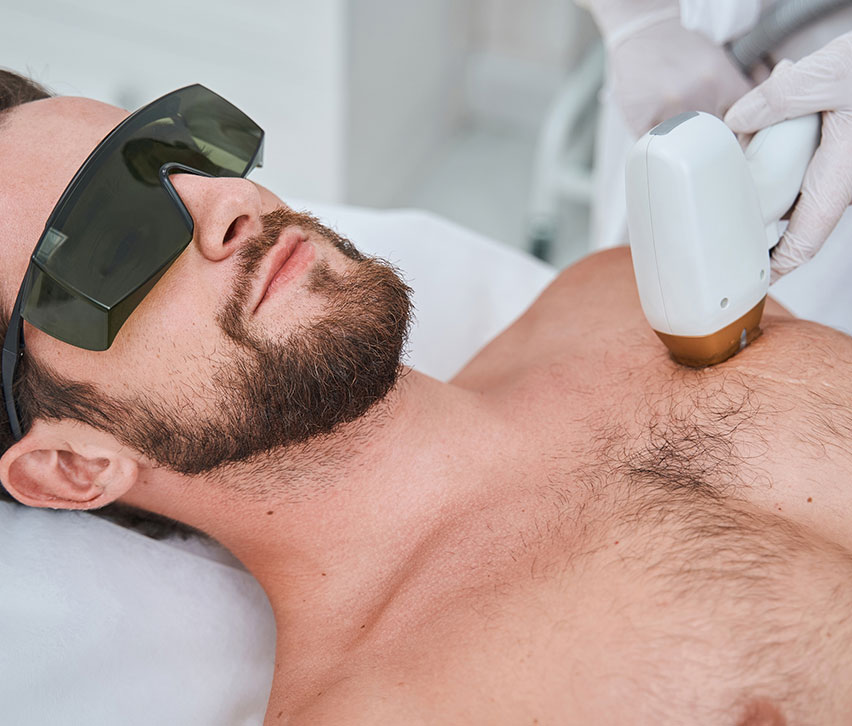
Scarring Treatment
Micro-needling, also known as collagen induction therapy, is a cosmetic procedure that involves the use of a device with fine needles to create controlled micro-injuries in the skin. This process stimulates the body’s natural wound healing response, leading to the production of collagen and elastin, which can improve the skin’s texture and appearance. Micro-needling can be used to treat a variety of skin concerns and conditions.
Here’s how the treatment works and some common applications:
How micro-needling works:
During a micro-needling session, a licensed healthcare professional or dermatologist will use a specialized device equipped with tiny needles to create micro-injuries in the skin’s surface. These controlled injuries trigger the body’s natural healing processes.
Common applications of micro-needling:
Improving skin texture and tone: Micro-needling can help reduce the appearance of fine lines, wrinkles, and uneven skin texture.
Reducing acne scars: It is effective in diminishing the appearance of acne scars, including pitted or depressed scars.
Minimizing large pores: Micro-needling can help improve the appearance of enlarged pores by stimulating collagen production.
Enhancing skin elasticity: It can tighten and firm the skin, making it appear more youthful.
Treating stretch marks: Micro-needling can be used to reduce the appearance of stretch marks, particularly when they are fresh or red in color.
Hyperpigmentation: It can help fade areas of hyperpigmentation and improve overall skin tone.
The micro-needling procedure:
Before the procedure, a numbing cream is applied to the treatment area to minimize discomfort.
The micro-needling device is then passed over the skin, creating thousands of tiny punctures.
After the procedure, the skin may appear red and slightly swollen, similar to a mild sunburn, but these side effects typically subside within a few days.
Number of sessions and results:
The number of micro-needling sessions required varies depending on the individual and the specific skin concern being addressed. Multiple sessions are usually needed to achieve optimal results.
Results may become more noticeable over time as the body produces more collagen and elastin, with continued improvement seen in the months following treatment.
Aftercare:
It’s important to follow post-procedure care instructions provided by your healthcare professional, including using gentle skincare products and avoiding direct sun exposure for a few days.
Frequently Asked Questions
Facial scars can result from various causes, including acne, injuries, surgical procedures, burns, infections, and skin conditions. How a scar forms depends on the depth and severity of the injury.
While it may not always be possible to remove facial scars entirely, several treatments and procedures can significantly improve their appearance, making them less noticeable.
There are several types of facial scars, including atrophic scars (resulting from tissue loss), hypertrophic scars (raised and thicker than surrounding skin), keloid scars (raised, reddish, and extend beyond the original injury), and pitted scars (such as those from acne).
To reduce the risk of facial scarring, it’s important to care for wounds properly by cleaning them, keeping them moist, and protecting them from further injury. Avoid picking at scabs, as this can lead to scars.
Over-the-counter products like silicone gels, sheets, and vitamin E creams may help reduce the appearance of scars over time. However, results can vary, and it’s essential to be patient and consistent with their use.
Yes, there are various professional treatments available for facial scars, including laser therapy, microdermabrasion, chemical peels, dermal fillers, microneedling, and surgical procedures like scar revision.
Makeup can be a useful tool for concealing facial scars temporarily. Many cosmetics specifically designed for scar camouflage are available. These can help improve the appearance of scars when applied correctly.
Some facial scars may naturally fade and become less noticeable over time. However, this process can take months or even years, and not all scars will fade significantly without treatment.
Scar massage is a technique used to soften and flatten scars. It involves applying gentle pressure to the scar tissue in a circular motion. Scar massage, combined with other treatments, can help improve the appearance of scars.
Depending on the treatment method used, there can be risks such as infection, changes in skin pigmentation, and scarring. It’s essential to consult with a healthcare provider or dermatologist to discuss potential risks and benefits.
Surgeons take precautions to minimize scarring during surgical procedures, such as using meticulous suturing techniques and placing incisions in less visible areas whenever possible. However, the extent of scarring can vary from person to person.
Consult with a dermatologist or plastic surgeon to discuss your specific scar and treatment options. They can evaluate your condition and recommend the most appropriate treatment based on your individual needs.


